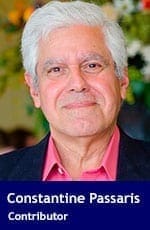 A university is far more than an institution and students are inspired not just through instruction. Location, architecture and ambience play big roles in higher learning.
A university is far more than an institution and students are inspired not just through instruction. Location, architecture and ambience play big roles in higher learning.
The University of New Brunswick and the City of Fredericton recently played host to about 120 senior university officials from across Canada and the U.S. The annual conference of the Association of University Real Estate Officials (AUREO) included university administrators from Princeton, Yale, Duke, Vanderbilt, Cornell, Dalhousie, Alberta, Saskatchewan, UNB and many other North American institutions of higher learning.
I was invited to give one of the plenary sessions. My address, Building for the Future During Challenging Times, articulated the lessons of history and what we can learn from the founding universities. It also analyzed the challenges and opportunities on the contemporary post-secondary landscape.
Universities have long served civil society as beacons of light and hope. They have aspired to be leading edge institutions for learning, education, knowledge and wisdom. Throughout history, human capital has appreciated in value. And in the 21st century, the resources between our ears are far more valuable than the resources beneath our feet.
Universities have always been fountains of hope, focusing on creating a better future and a better world. They have enhanced economic progress, artistic development, medicine and science. They are responsible for ground-breaking inventions, literary best sellers and many other spectacular accomplishments of human endeavour.
Europe’s founding institutions of higher learning were Plato’s Academy and Aristotle’s Lyceum, both born in ancient Greece. For university real estate officers, those were truly the good old days. The architectural requirements for those early universities were functional and minimal. Indeed, their academic mission was accomplished simply with a gymnasium and a meeting place.
The gymnasium was essential to putting into practice the widely-acclaimed idiom that a healthy mind exists in a healthy body. Young Athenians practised wrestling, running and throwing the discus. The best among them participated in the ancient Olympic Games.
In addition, space was required for more intellectual pursuits. But the area designated for lectures, debate and dialogue was not always a conventional classroom. Plato’s preference was an olive tree with large branches to provide shade from the Athenian sun. Aristotle, on the other hand, acquired the nickname of the peripatetic philosopher because he preferred to take his students for long walks.
History can explain the present and inform the future. So the lessons from those two foundational institutions resonate up to the present time. The first is their location. They were established at a considerable distance from the hustle and bustle of daily life. Their ambience was iconic in the grandeur, elegance and symmetry of the buildings. The view from their campuses was spectacular and inspirational. Above all, the landscape was carefully selected to promote serenity and contemplation.
Universities in the 21st century have become foundational institutions for our provinces and our country. Their role is vital and the expectations are high. Stakeholders such as provincial governments, business, society and students have raised the bar higher than it has ever been before.
In fulfilling their academic mandate, universities are required to be engaged and empowered. They are also expected to be aspirational and inspirational.
In this modern journey, university real estate administrators have an important role. They carry on their shoulders the vital and singularly important task of shaping the architectural and physical landscape of their institutions. Talk about multi-tasking.
Real estate officers are the custodians of a university’s institutional heritage, stewards of its architectural traditions, managers of its academic excellence, promoters of its competitive advantage and builders of its future panoramic landscape.
Dr. Constantine Passaris is a professor of Economics at the University of New Brunswick and a National Research Affiliate of the Prentice Institute for Global Economy and Population at the University of Lethbridge.
Constantine is a Troy Media contributor. Why aren’t you?
The views, opinions and positions expressed by columnists and contributors are the author’s alone. They do not inherently or expressly reflect the views, opinions and/or positions of our publication.


